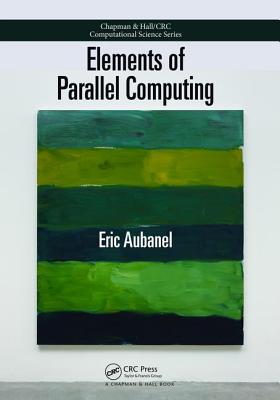Created to help scientists and engineers write computer code, this practical book addresses the important tools and techniques that are necessary for scientific computing, but which are not yet commonplace in science and engineering curricula. This book contains chapters summarizing the most important topics that computational researchers need to know about. It leverages the viewpoints of passionate experts involved with scientific computing courses around the globe and aims to be a starting point for new computational scientists and a reference for the experienced. Each contributed chapter focuses on a specific tool or skill, providing the content needed to provide a working knowledge of the topic in about one day. While many individual books on specific computing topics exist, none is explicitly focused on getting technical professionals and students up and running immediately across a variety of computational areas.
While much has been written on Marcel Duchamp - one of the twentieth century''s most beguiling artists - the subject of his flirtation with architecture seems to have been largely overlooked. Yet, in the carefully arranged plans and sections organising the blueprint of desire in the Large Glass, his numerous pieces replicating architectural fragments, and his involvement in designing exhibitions, Duchamp''s fascination with architectural design is clearly evident. As his unconventional architectural influences - Niceron, Lequeu and Kiesler - and diverse legacy - Tschumi, OMA, Webb, Diller + Scofidio and Nicholson - indicate, Duchamp was not as much interested in ''built'' architecture as he was in the architecture of desire, re-constructing the imagination through drawing and testing the boundaries between reality and its aesthetic and philosophical possibilities. Marcel Duchamp and the Architecture of Desire examines the link between architectural thinking and Duchamp''s work. By employing design, drawing and making - the tools of the architect - Haralambidou performs an architectural analysis of Duchamp‘s final enigmatic work Given: 1. The Waterfall, 2. The Illuminating Gas... demonstrating an innovative research methodology able to grasp meaning beyond textual analysis. This novel reading of his ideas and methods adds to, but also challenges, other art-historical interpretations. Through three main themes - allegory, visuality and desire - the book defines and theorises an alternative drawing practice positioned between art and architecture that predates and includes Duchamp.
Get Elements of Parallel Computing by at the best price and quality guranteed only at Werezi Africa largest book ecommerce store. The book was published by Taylor & Francis Ltd and it has pages. Enjoy Shopping Best Offers & Deals on books Online from Werezi - Receive at your doorstep - Fast Delivery - Secure mode of Payment
 Jacket, Women
Jacket, Women
 Woolend Jacket
Woolend Jacket
 Western denim
Western denim
 Mini Dresss
Mini Dresss
 Jacket, Women
Jacket, Women
 Woolend Jacket
Woolend Jacket
 Western denim
Western denim
 Mini Dresss
Mini Dresss
 Jacket, Women
Jacket, Women
 Woolend Jacket
Woolend Jacket
 Western denim
Western denim
 Mini Dresss
Mini Dresss
 Jacket, Women
Jacket, Women
 Woolend Jacket
Woolend Jacket
 Western denim
Western denim
 Mini Dresss
Mini Dresss
 Jacket, Women
Jacket, Women
 Woolend Jacket
Woolend Jacket
 Western denim
Western denim
 Mini Dresss
Mini Dresss





































